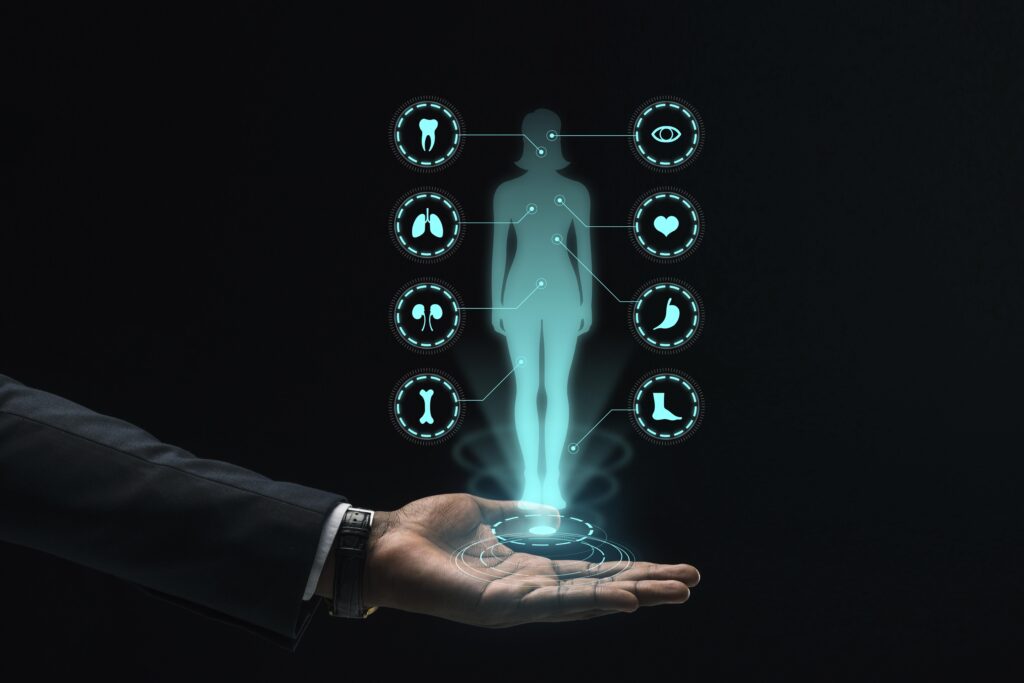The idea of existence beyond mortality has attracted and confused mankind throughout the ages. As our knowledge of technology and the natural world progresses, fresh opportunities for maintaining a bond with our deceased loved ones have surfaced. In this blog, we will explore the fascinating sphere of existence beyond mortality and examine the application of holographic technology, voice replication, and eco-friendly burial methods to sustain a bond with our loved ones.
The Search for Immortality
- The Human Desire for Immortality
Over the course of time, individuals have wrestled with the longing to surpass the limitations of life. Throughout various historical narratives and contemporary spiritual convictions, the concept of a dimension existing beyond our natural existence has offered comfort and motivation. In the age propelled by scholarly and mechanical advancement, this timeless search for everlasting life has acquired new dimensions.
- Technological Advancements in Pursuit of Immortality
In the search of everlasting life, advancements in science and innovation have appeared as an outstanding asset. Progress in areas like machine learning, life sciences, and material research have prompted contemplation about the potential for expanding our existence beyond mortality. Three technologies that have attracted significant attention are holograms, voice replication, and eco-friendly burial methods.
Holograms: Preserving Visual Memories
- Understanding Holographic Technology
Holographic technology is quite remarkable. By capturing and replicating visual patterns, it generates three-dimensional representations that possess an almost real quality. In the past a few decades, technology like this has discovered a distinct use in safeguarding visual recollections of our dear ones.
Holograms operate through the process of capturing and storing the complex patterns of light waves that are emitted by something and then reflecting from various angles. When these documented oscillations are projected, they generate a three-dimensional representation that can be observed from various vantage points, imitating the visual manifestation of the genuine entity.
- The Holographic Afterlife
Consider the possibility of perceiving and engaging with a three-dimensional projection of a departed cherished individual. This idea has became reality for certain individuals, as holographic tributes experience an increase in favour. For Example in Japan, a certain organisation named “Gatebox” has developed a holographic companion driven by AI, which has the ability to imitate the existence of a deceased partner or relative. Individuals are capable of engaging in discussions, share a meal, and commemorating noteworthy events alongside their holographic partners.
- Ethical and Emotional Considerations
Although the concept of establishing a link with a holographic portrayal of a cherished individual may appear consoling, it also gives rise to ethical concerns. Is it morally acceptable to generate a digital replica without the explicit authorization of the deceased individual? Furthermore, is it possible for a holographic representation to authentically represent an individual’s essence, or does it potentially run the risk of oversimplifying the complexity of human existence into mere pieces of information?
Regardless these fears, holographic technology offers a feeling of relief and unity for certain individuals. It enables individuals to sustain a bond with their dear ones in a manner that was formerly the substance of speculative literature.
Voice Cloning: Keeping Loved Ones’ Voices Alive
- The Technology Behind Voice Cloning
Voice cloning technology have shown significant progress in the past few years. It consists of the utilisation of AI models to examine and imitate an individual’s verbal patterns, pronunciation, and subtle differences. This enables the development of artificial vocalisations that closely resemble the vocalisations of organic entities.
- Comfort in Familiar Voices
The ability to hear a loved one’s voice after death can be comforting. Customised vocal aids using voice replication technology allow grieving people to speak to virtual representations of their loved ones.
For instance, an organisation named “Aflorithmic” offers “HereAfter AI.” This service lets users create AI-powered chatbots that mimic the conversational style of deceased people. Grieving people may find comfort in these chatbots.
- Ethical Considerations and Limitations
Voice cloning, like holography, raises ethical concerns. Can we use the voices of deceased people for emotional comfort? What are the consent and privacy implications? Despite advances in voice replication technology, it has limitations. Developing a convincing artificial vocalisation requires a lot of audio data, but perfect results are uncertain.
Human Composting: A Sustainable Connection
- Human Composting: An Eco-Friendly Approach
Ecological factors’ effects on mortality and our connection to nature have become increasingly apparent in recent years. Human composting is gaining popularity as a sustainable alternative to burial or cremation.
Human composting, also called “organic reduction,” involves placing the deceased in a container with wood fragments and dried plant stalks. Microbial action decomposes the physical form into nutrient-rich soil over time. This ground substance can then be used to feed flora or trees, creating vibrant memorials.
- Nurturing New Life from the Departed
One important thing about human composting is that it can help the natural progression of life. People who have died blend in with the environment’s complex web of life, making it easier for new life to start. Families can remember their loved ones by taking care of a plant or a piece of land. This creates a connection with the dead that lasts and is good for the environment.
- The Emotional and Legal Landscape
Human composting may have serious emotional consequences if one chooses it for postmortem disposal. It helps people see the end of life as part of the cycle of life, giving them a sense of continuous progression and relationship with their environment.
Still, the process of composting people has some legal problems, just like many other developing methods. Rules and social attitudes vary, and it can be hard to understand the legal environment.
Connecting with Loved Ones: A Holistic Approach
- Combining Technologies and Methods
Despite the availability of holograms, voice replication, and environmentally friendly burial practises, some people choose to combine them to enhance their posthumous experience. A three-dimensional simulated portrayal of a loved one could be used with a voice-duplicated conversational programme to enable simultaneous visual and auditory engagement.
- Coping with Grief and Loss
Sadness is deeply personal and unique to each person. These technologies and methods may provide comfort and connectivity, but they should not replace the help of loved ones, friends, and mental health professionals. Support and therapy remain essential for grief management.
Conclusion
Science and nature have opened new avenues for connecting with the dead. Holographic projections, voice replication, and eco-friendly burial methods offer moral, sentimental, and legal considerations.
As we continue this brave novel realm, we must carefully consider these technologies and approaches. They can provide comfort, restoration, and a sense of continuity in one of life’s greatest mysteries—the transition from this world to the next. How we remember and bond with our loved ones after their death is deeply personal, demonstrating the lasting power of human love.
Frequently Asked Questions(FAQ)
Is human composting a legal and widely accepted method of after-death disposal?
Human composting’s legality and acceptance vary by location. Some states and countries have embraced it, while others are still developing regulations or may not permit it. It’s crucial to research your local laws and consult with funeral professionals.
What are the limitations of voice cloning technology in replicating a loved one’s voice?
Voice cloning can create convincing synthetic voices, but it requires extensive recordings for accuracy. It may struggle with recreating certain nuances or emotions, and the quality of the synthetic voice can vary based on the available recordings.
Are holograms and voice cloning ethically sound ways to stay connected with the deceased?
The ethical implications of using holograms and voice cloning can be complex. It depends on individual beliefs, consent, and the emotional well-being of the living. It’s essential to approach these technologies with sensitivity and respect for the deceased person’s wishes, if known.



